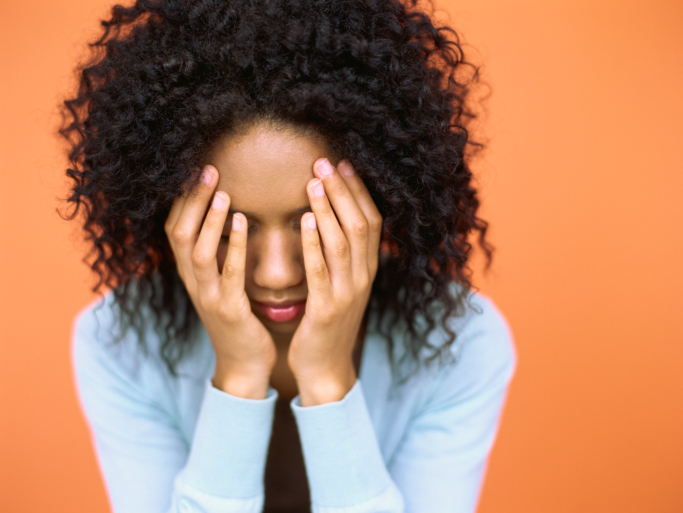
No woman likes to admit having facial hair, but it’s one of the most common aesthetic complaints in beauty. Plus, those chin hairs may be more serious that you think.
Unwanted facial hair, known as hirsutism, affects millions of women of all ages. Around 10% of U.S. women contend with some degree of hirsutism daily. Some of the most common areas are the upper lip, chin, neck, back and bikini line.
SIGN UP FOR OUR NEWSLETTER HERE!
What Causes Hirsutism?
Hirsutismandrogen hormones
The most common cause is polycystic ovarian syndrome (PCOS). Major signs of PCOS are irregularities in menstrual cycles, ovarian cysts, high androgen levels and unexpected weight gain especially in the abdomen area.
You May Also Like
9 Foods You Should NEVER Eat after Age 30
Another cause of hirsutism is genetics. If immediate female family members have it, chances are you will develop it, too.
Diabetes, when the body’s blood sugar runs dangerously high or low, may be another culprit. Weight gain and diabetes are often correlated together and a lack of metabolism may cause hormonal imbalance. Other conditions include congenital adrenal hyperplasia, hyperthyroidism and rare adrenal and ovarian tumors.
Behaviors such as poor dieting, steroidal medications, smoking and pregnancy can cause hirsutism, too.
RELATED: Young Woman Battles Excessive Facial Hair
Hormonal imbalance also brings stress. If you cannot manage demands in life, anything and everything may overwhelm you, including body image.
You May Also Like
Real Housewives Star Describes Terrifying Medical Experience!
READ: Managing Your Weight With PCOS
How to Treat Hirsutism?
There are two answers to this question: medication and physical hair removal.
Homemade Sugar Wax
> Mix two teaspoons of granulated sugar (brown or white) and one teaspoon each of honey and water. > Heat the mixture in a microwave or on a stove for about half a minute until it bubbles and turns brown. Allow it to cool. > Using a spatula, apply it on the areas where you want to remove the hair. > Place a cloth strip over the sugar wax and smooth it out with your fingers in the direction of the hair growth. > Finally, rip it off in the opposite direction of hair growth. > Repeat as needed.
Chickpea Flour Remedy
A chickpea flour face pack will help exfoliate your skin to remove dead skin and hair. Plus, it can lighten the color of your skin and facial hair. You can get chickpea flour, also known as gram flour or besan, from an Indian market or health food store.
> Mix together two tablespoons of chickpea flour, one tablespoon of milk cream, one and one-half teaspoon of milk, and three-quarter teaspoons of turmeric. Apply this thick paste on your face and leave it on for 20 minutes or until it dries. Scrub it off using a facial loofah pad or simply a soft cloth dipped in lukewarm water. Do this at least three or four times a week for about a month.
> Alternatively, mix one tablespoon of chickpea flour, one-half teaspoon of plain yogurt, and one-quarter teaspoon of turmeric. You can also add one-half teaspoon of rose water. Spread it on your face and leave it on for 20 minutes before scrubbing it off.
> Another remedy involves mixing two tablespoons of chickpea flour, one-quarter teaspoon of turmeric and enough milk (about ½ teaspoon) to make a thick, smooth paste.
A popular medication is Spironolactone. This medicine acts as an anti-androgen that inhibits testosterone activity. But Spironolactone is a diuretic, meaning it may alter your potassium levels, so testing is necessary throughout your Spironolactone regimen. Side effects may include weight gain, headaches and urinating more frequently. It is imperative you stop Spironolactone if you are pregnant. It may feminize a male fetus.
Other medications include birth control, finasteride and flutamide, metformin and Vaniqa, the only FDA approved topical medication for facial hair.
Medication slows the growth of the hair; it does not always stop it. Shaving will give you relief for a day or two. Waxing, sugaring, tweezing and threading may keep the hair away for maybe a week or more.
But all these methods are temporary and they may cause ingrown hairs, especially with removing thick, curly hairs. Hot compresses and gentle exfoliation may help remove ingrowns.
More professional methods include laser hair removal and electrolysis. A laser is zapped to the skin to pierce the hair follicle, causing its destruction. Over a number of sessions, the follicle will become damaged, causing hair growth to retard, though touch up sessions are typical.
Electrolysis, which involves channeling energy to the hair follicle via a needle, is FDA approved for permanency. With enough successful treatments, those treated follicles will no longer grow hair.
READ: Acne Scars: Make Them Go Away For Good
Are There Natural Approaches?
Studies have shown that herbal supplements myo-inositol, flaxseed and spearmint have anti-androgenic affects. Sipping two cups of spearmint tea daily may significantly slow your hirsutism. Lavender oil and tea tree oil, when applied topically, may reduce milder hirsutism cases. Fennel gel was found to decrease hair thickness in cases of excessive body hair, too.
A balanced diet of leafy greens, fruit, lean meat and fresh fish may help balance hormones. Monitoring your glycemic intake would be helpful because an increase in sugar could throw your hormones off.
Exercising, regardless of your weight, will also help balance your hormonal levels. Exercising can be therapeutic, providing a way to relieve stress and relax.
While hirsutism may a personal embarrassment to you, there are means to managing it and getting rid of it completely. Talk to your doctor today about your hormonal imbalance and love your skin again!
Visit the BlackDoctor.org Diabetes center for more articles.
Mo writes about the embarrassing condition, hirsutism, and related topics of hormonal imbalance. Dealing with hormonal problems for 15 years, she takes her experiences to her blog, www.thehirsutismhub.com and shares it with other women dealing with similar issues.





































